Posted By: Andy Kamashian | Posted On: May 1, 2018
The Fundamentals of a Vertical Machining Center (VMC)
Introduction to Vertical Machining
Vertical Machining has been around in its most basic form for more than 150 years. Yet, it's still one of the newest forms of machining technology (turning/lathes is the oldest). The process of “milling” entails a rotating cutter, or drilling bit, and a movable work table, which the workpiece is affixed to.
The cutter is attached to and rotated in a housing called the "spindle." Through the sharpness of the tool and force of the table pushing the material into the cutter, the material yields and is cut or shaved away as desired. The axis of force can be up/down (referred to as the Z-Axis) left/right (referred to as the X-Axis), or front to back (referred to as the Y-Axis).
The Original Milling Machine
Diagram of a milling machine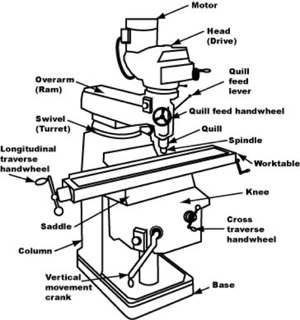
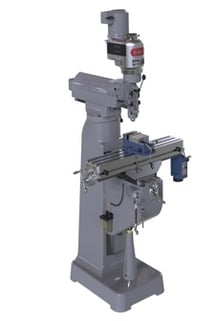
VMCs can be equipped with multiple adjustments. For example, there are many angles of approach available as well as rotary and other positioning devices up on the worktable. Later renditions of the VMC design added power and hydraulic feeding devices to make the system more automated and, eventually, computerized controls were added to allow for more automation in operation, repeatability, tool selection/changing and contour control. These new CNC’s took the “milling” machine to a new level of productivity and, thus, the term VMC (Vertical Machining Center) was born.
Vertical Machining Center: Underneath the Covers
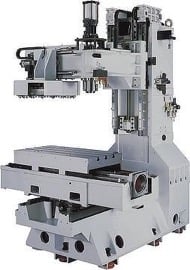
The CNC VMC: Basics of the Process
VMCs are utilized primarily (although not solely) as metal cutting machines that remove steel, aluminum or other hard materials—thus, shaping a raw block of material into a precision formed, or “machined” surface.
VMCs can be utilized for not only cutting, but also drilling, carving, engraving, tapping, countersinking, chamfering and many other applications. Because of their versatility and relatively low cost, they are extremely popular machines that are found in shops all over the world. In fact, chances are good that there is a machine in operation just a few miles from where you are reading this now.
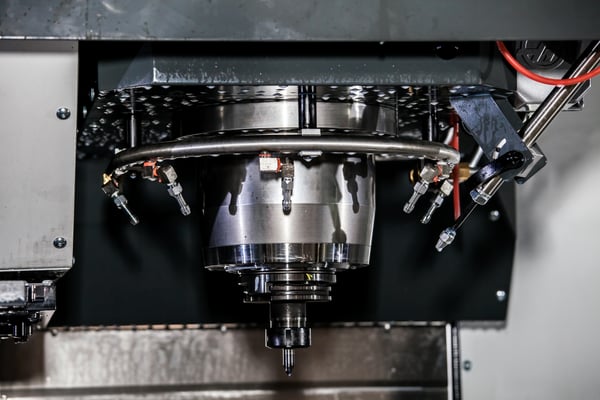
VMCs all use a commonality of components, which are as follows:
- Rotating Spindle — The Spindle, which is perpendicular to the working surface or table, can hold a variety of cutting tools (or mills as they are sometimes called). The spindle cartridge is mounted in a housing that moved up and down—this direction of motion is called the Z-Axis.
- Table — The Table is a platform on which to mount workpieces—either directly or through a variety of fixtures like milled aluminum plates or hard clamping vises. The table has a motion of left and right, which we call the X-Axis, and front to back, which is called the Y-Axis. These two axes of motion, coupled with the Z-Axis, allow for virtually unlimited contouring across the planes of motion.
Additional Common Components
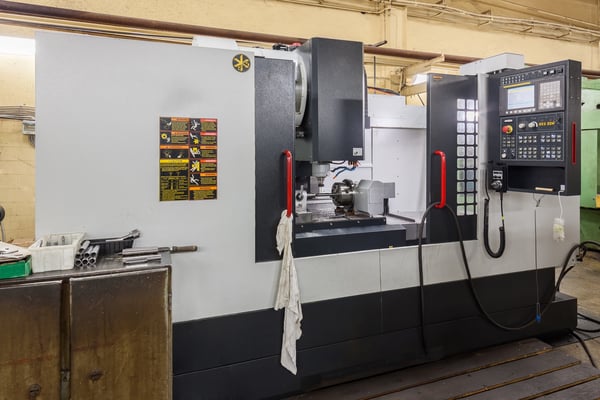
- Tool Changer — A tool changer greatly increases a VMC's productivity by allowing for the automatic, computer-controlled selection of tools for a variety of tasks from rough cutting to fine hole boring.
- Coolant System — To keep parts and cutters cool and lubricated, most VMCs employ some sort of recirculating coolant system; which is usually a mix of soluble oil and water but can be a variety of other liquids as well.
- Chip/Screw Conveyor— To evacuate the chips from the work zone, a variety of chip conveyors and chip augers may be employed to increase productivity and reduce downtime from manually shoveling out waste chips.
- Full Covers/Enclosures— These can be added to reduce the splash/splatter caused by milling operations and protect the operators and environment from the machining process.
- Rotating Tables — Adding additional Axes to the machine can greatly increase its productivity by turning a simple three-axis machine into a four- or even five-axis system capable of machining complex components with varying surfaces (such as turbine blades).
- Quick Loading Loaders — Another great addition to significantly increase productivity is the use of shuttle tables or other automatic part loading systems. These can decrease downtime and greatly increase the spindle “ON” time of most VMC systems.
Common Uses of VMCs Include: Machining parts for manufacturing assemblies, castings, automotive, mold/die making, and many other metal cutting tasks.
Common Industries Using These Processes:
- Automotive Industry,
- Shipbuilding,
- Machine Shops,
- Machinery Builders, and
- Manufacturing Industry.
At Southern Fabricating Machinery Sales, we have a wide variety of Milling Systems and Vertical Machining Centers. Coupled with our staff's knowledge of these powerful systems, we can be your best source for Milling, Turning, EDM, Fabrication and Plastics machinery. Call us today at 813-444-4555 or visit us on the web at www.southernfabsales.com






